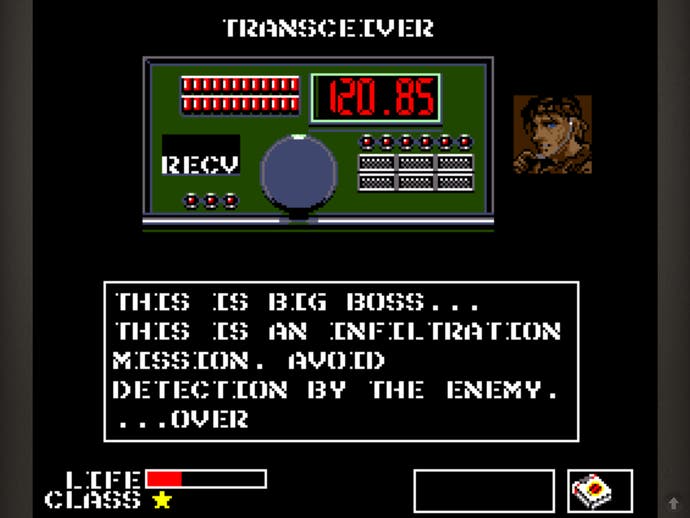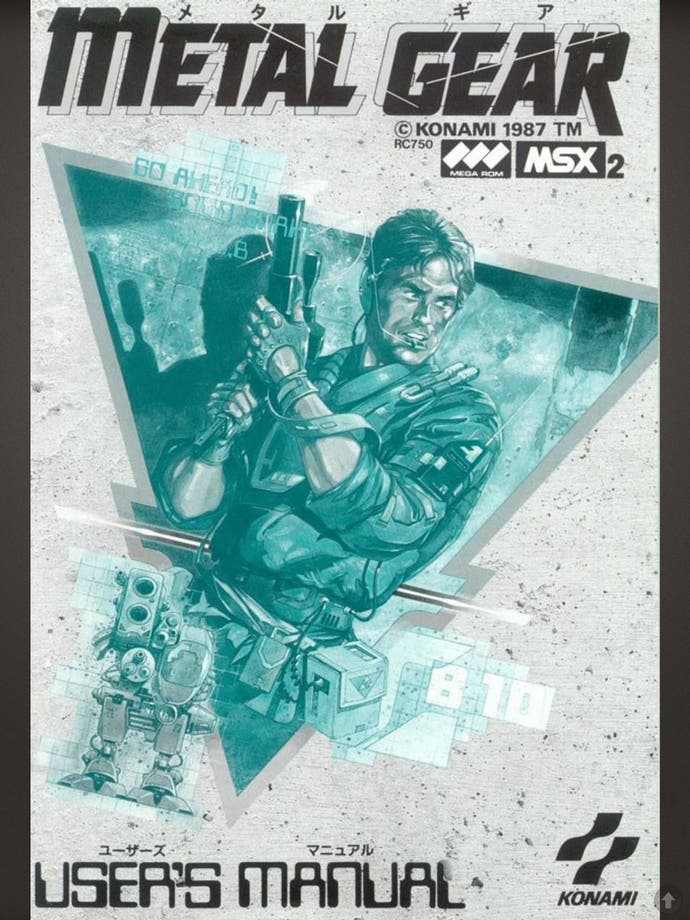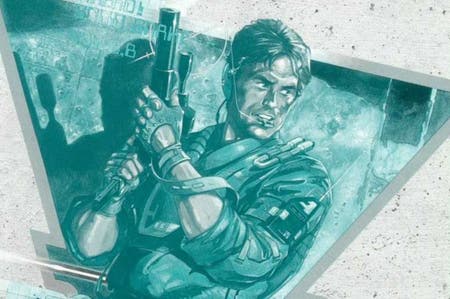Metal Gear - 25 Years On
Snake shoots first!
A quarter of a century ago in the Japanese home computing market, a Microsoft-sponsored machine called the MSX2 dominated. It had done so since launching in 1983 and, despite the rising fortunes of Nintendo and the Famicom, remained a key platform for the region's game developers. In late 1986 to early 1987 Konami was on a blistering hot streak, producing first Castlevania for Nintendo's Family Disc System then Contra in the arcades. Nevertheless, July 7 1987 saw the exclusive release of a new title on the comparatively underpowered MSX machine: Metal Gear.
The first of what would become a defining series, it was also Hideo Kojima's debut as a lead designer, and did well enough to earn several ports (including an altered NES version) as well as a quick Kojima-less sequel. 25 years ago, gamers took their first steps as Solid Snake.

Metal Gear is hard to see with fresh eyes, not least because of Kojima himself. The version I played came with Metal Gear Solid 3: Subsistence, a more or less faithful port but one that has had a slight re-touching. The original western translation is a bad one, and is replaced - meaning certain phrases appear with real resonance for series fans ("All-terrain, nuclear-equipped, walking battle tank") but you're not quite sure if it said that in 1987.
Turns out it didn't. For players back then, Metal Gear "HAS NUCLEAR WEAPONS DESIGNED FOR EVERY PART OF EARTH." There's a full text dump of the original script here if you're interested. The point is not to pick holes in these changes, because clearly the new version's an improvement (not to mention the original omitted something like 40 per cent of the original text). It is to acknowledge that the Metal Gear we play now, unless you're dedicated enough to emulate the MSX2 version, is a curated object.
This is something common: the artist returning to his earlier work and 'improving' it with experience. Perhaps the best-known example in our times, and the reason for inverted commas, is the ongoing tidying up of the Star Wars trilogy. These days we all know Han Solo would never shoot first, perish the thought.

It's important to bear in mind for Metal Gear, because looking at it with knowledge of what's to come is remarkable. Metal Gear is not an 8-bit masterpiece that stands up today, though it's still fun in places. But it contains so many of the key elements that come to define the series, in an embryonic 2D form that at times it almost feels like a demake.
Metal Gear begins with Solid Snake swimming to a dock entrance at a military base: over a decade later, so would Metal Gear Solid. The game was a more straightforward shooter as the limitations of the MSX2 hardware, in terms of bullets and explosions on-screen, combined with a pet idea of Kojima: a military game about avoiding confrontation. The result is the strange mash-up of systems that created the stealth genre.
The guards in Metal Gear follow set patrol routes (with a few surprises thrown in), and only react to Snake if they see him. It's still an impressive effect now, complete with the comedy '!' symbols, though it's one the game uses less and less after its first two hours. Metal Gear's initial (and largest) building has been lavished with attention, most obviously illustrated in the way guards' walking patterns differ depending on what part of the screen you enter from.
This stops happening in later locations, because most of the time you're sprinting through like Benny Hill. Metal Gear's second half moves into more usual shooter territory, with regular bosses and unavoidable firefights. It still has stunning moments, one of which we'll go over later, but the first section is where the imagination and wit of its first-time designer is most amply showcased, as well as situations waiting to become iconic.

Snake begins the game with a packet of cigarettes, which you can equip - his health will decrease every so often, with a little warning beep. He's contacted periodically on his radio, and can eventually call others to ask advice for specific situations. Your mission begins with rescuing hostages, one of whom is a scientist attached to the Metal Gear project. At one point you get Snake captured deliberately to access another part of the base, have to escape a jail cell and find your equipment. There's an electrified corridor that you have to guide a missile through in order to smash its circuit. A minefield leading up to a tank battle. Trucks that move around the base. A cardboard box. Every Metal Gear fan is nodding their head in recognition.
One late flourish deserves particular mention, because more than anything it contains the seed of what was to come. Near the end of the game Big Boss, Snake's commander, gets a bit agitated at how well you're doing. He radios through, and here's the original text:
THIS IS BIG BOSS… SOLID SNAKE! STOP THE OPERATION SWITCH OFF YOUR MSX AT ONCE.
If anything especially distinguishes Metal Gear among other great series, it is surely Kojima's infatuation with talking at and to players. To quote Dr Johnson, it is the fatal Cleopatra for which he lost the world, and was content to lose it. In Metal Gear Solid it finds expression in the genius touch of Psycho Mantis, and Ocelot's 'autofire' comment. In Metal Gear Solid 2 it creates one of the most bizarre, ingenious and drawn-out conclusions ever - and the unforgettable frisson of Fission Mailed. In Metal Gear Solid 4, it asphyxiates the whole thing. The fourth wall is an obsession for Kojima, and this is the first time he stabs at it.

Saying that Metal Gear lays the foundations for a much better 3D game is easy, of course, but no less true. It's especially notable how many items survive, like the guided missile, and how they are later transformed in operation (in Metal Gear Solid you 'drove' the missile in first-person) yet have the same core use. Eiji Aonuma, longtime director of the Zelda series, once said that in the process of developing Ocarina of Time he was constantly surprised at how well elements of the 2D games adapted to 3D, adding with characteristic grace "it was almost like Mr Miyamoto planned it." You get the same feeling from Metal Gear.
It also suggests something about Metal Gear Solid, the 1998 PlayStation game that made the series a phenomenon. Kojima loves punning titles (Snake Eater?!?) that can be interpreted all manner of ways. And 3D is the prerequisite for many of Metal Gear's ideas becoming brilliant - stealth and increased spatial complexity was the magic combination. 25 years on we can look back on Metal Gear and, with easy assurance, put a pin in so many individual touches that will become themes and a more unified whole. If not a classic game, Metal Gear is the prototype for one. It would take another eleven years for technology to catch up with Kojima's vision, and make it Solid.

